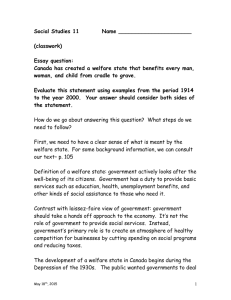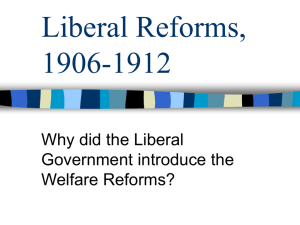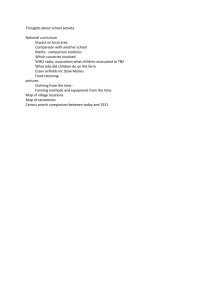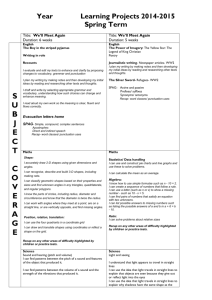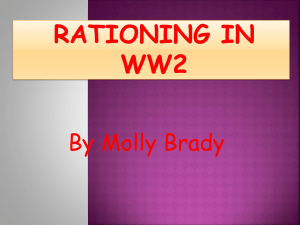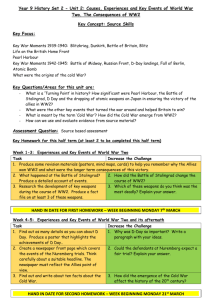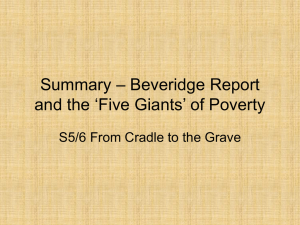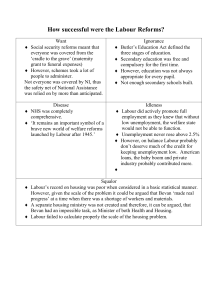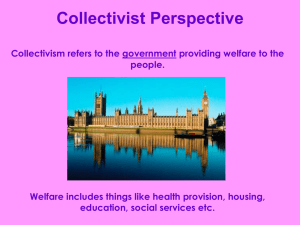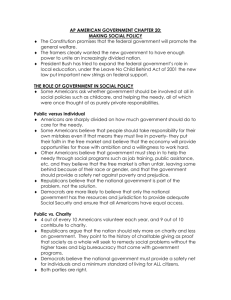The Labour Government 1945
advertisement
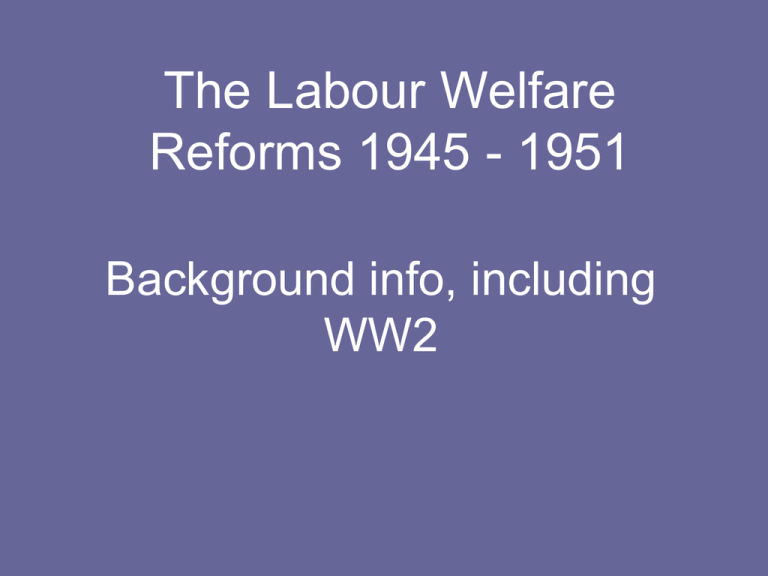
The Labour Welfare Reforms 1945 - 1951 Background info, including WW2 Social Welfare before 1945 Legacy of Liberal welfare reforms, 1906 – 1914 • Move away from individualism to collectivism • Acceptance of need for government to intervene, to address social problems • BUT – only certain sections of society benefited; only intended for the poorest; some benefits means-tested ie had to prove poverty Legacy of Liberal welfare reforms, 1906 – 1914 • • • • • National Insurance – expanded over the years to be available to most manual workers Unemployment Assistance Board created to help address unemployment Old Age Pensions – increased amount Large-scale government investment in housing eg 700,000 council houses built between 1931 and 1939 Free milk, free school meals, many government –funded schools Influence of WW2 • Conservative-led coalition government had to control all aspects of life greater acceptance of state intervention for all (not just the poor) • Higher taxation (50%) to pay for war effort • War Socialism – creation of new government departments / bureaucracy • Public’s assumption that: - pre-war poverty unacceptable - deserve ‘reward’ of a better Britain Influence of WW2 • Unifying aspect of WW2 – all classes worked together for war effort; all classes suffered effects of bombing / loss of loved ones; middle classes shocked by poor condition of evacuees • Beveridge Report 1942 – massively popular with the public (635,000 copies sold); chimed with the desire for a better (post-war) Britain; Churchill less keen Beveridge’s 5 Giants WANT (poverty) DISEASE (health) IDLENESS (unemployment) IGNORANCE (education) SQUALOR (bad housing) Conservative-led Coalition Government’s response • Proposal of a national health service • Acceptance of need for government intervention to regulate labour market • Proposal for comprehensive insurance scheme • Education Act 1944 • Family Allowances Act 1945
